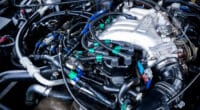Infiniti announced the then-new Nissan VR30DDTT engine on December 15, 2015. It debuted under the hood of the 2016 Infiniti Q50 sports sedan and was also found in the 2017-onward Q60 coupe.
In 2019, Nissan installed the VR30DDTT in the V37 Skyline and the latest addition to Nissan’s performance lineup, the Nissan Z, also uses the same 3.0L twin-turbo V6 unit.
The engine delivers either 300 hp or 400 hp depending on the car and has rightfully earned a spot on Ward’s 10 Best Engines list owing to its exceptional qualities.
In this article, we’ll take a closer look at Nissan’s excellent VR30DETT engine, with a particular focus on its reliability and tuning potential.
Nissan VR30DDTT Specs
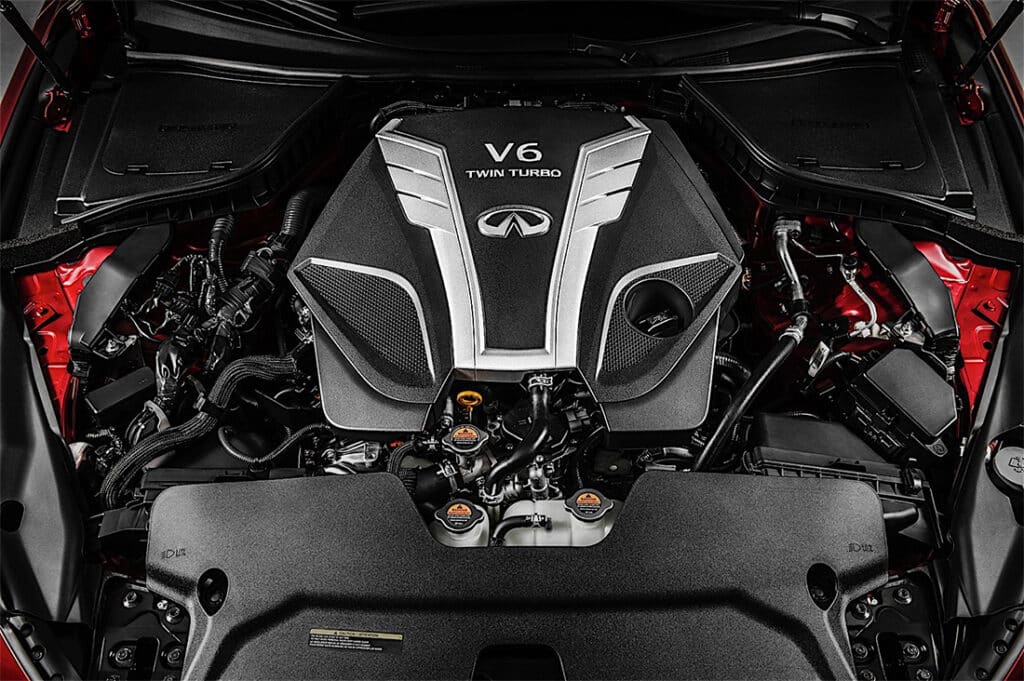
Engine code: VR30DDTT
Production: 2015 to present
Layout: Twin-turbocharged V6, DOHC, 24-valve
Displacement: 2997cc (3.0L)
Fuel system: Direct injection
Cylinder bore: 86mm (3.39″)
Piston stroke: 86mm (3.39″)
Compression ratio: 10.3:1
Power: 300 hp to 400 hp at 6,400 rpm
Torque: 295 lb-ft to 350 lb-ft at 1,600 to 5,200 rpm
Firing order: 1-2-3-4-5-6
The Nissan VR30DDTT block and cylinder head are both made from aluminum.
It features 2 direct-mount turbochargers with an integrated exhaust manifold and electronic wastegate actuator. Additionally, it also uses twin water-to-air charge coolers and Nissan’s VTC variable timing control system.
As usual, all the letters and numbers in the engine’s name have a meaning. Here’s what the engine code stands for:
- VR: Engine family
- 30: 3.0L displacement
- D: DOHC
- D: Direct injection
- TT: Biturbo or twin-turbo
VR30DDTT Reliability and Common Problems

So, is the Nissan VR30DDTT a reliable engine? Well, members on various owners’ forums have reported a few issues, most notably drive belt failure, carbon build-up, and fuel injector failure.
We’ll cover each of these VR30DDTT reliability issues in more detail below.
Drive Belt Failure
The drive belt, also commonly referred to as the accessory belt or serpentine belt, has been a known issue with the Nissan VR30DDTT engine for quite some time now.
The manufacturer did take the problem seriously and issued a service bulletin to rectify the problem.
It shouldn’t be a cause for concern on models made after 2017, as the Infiniti Q50 and Q60 models from 2016 and 2017 seem to be the ones most affected by timing belt failure.
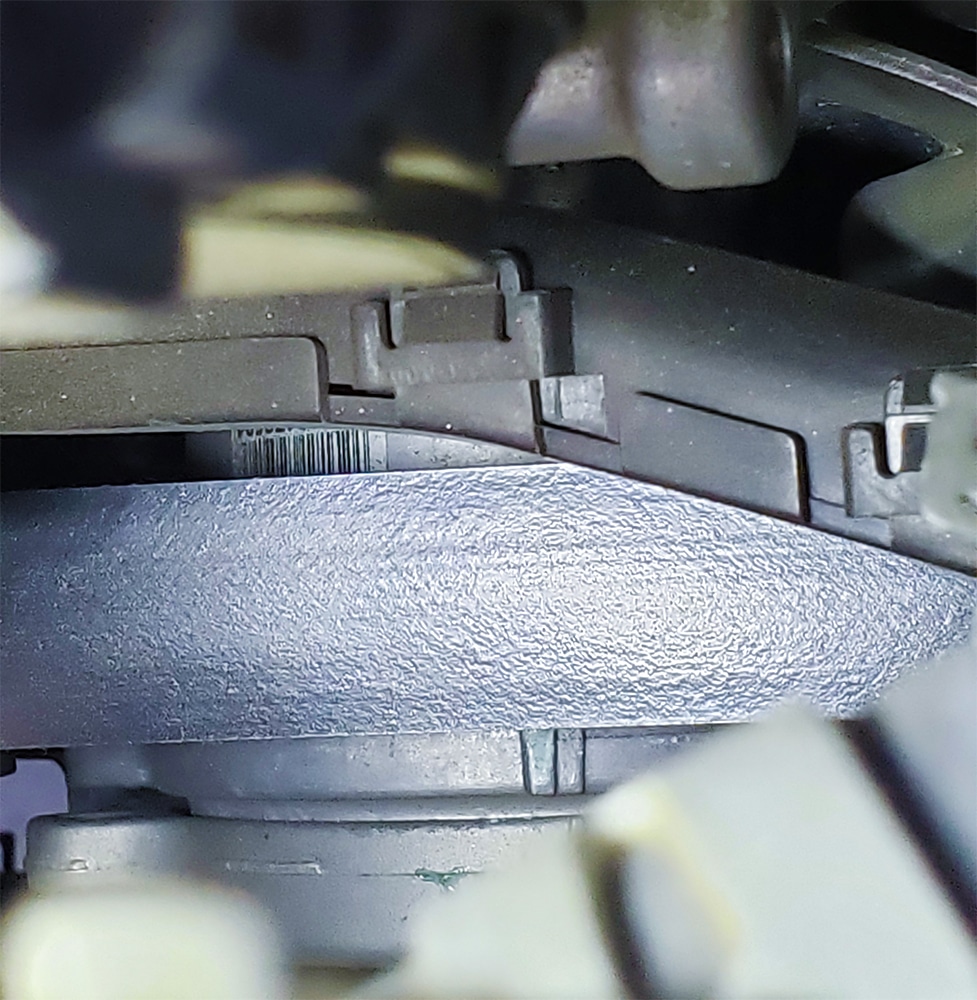
This makes sense, as it was a new engine at the time, and virtually every brand-new unit suffers from some sort of teething issues and design flaws.
However, we feel it’s important to address it. You’ll agree if you know what happens when a timing belt breaks — it can cause serious problems.
If you own a car with a VR30DDTT engine made before 2018, it’s wise to have the drive belt sorted before it breaks.
You may experience certain symptoms before the drive belt snaps, such as a squeaky or noisy belt, but that’s not always the case.
You’ll certainly notice once it fails, though, as the dash will most likely light up like a Christmas tree.
The check engine light will definitely turn on, there will be a loss of power, there may be A/C issues, and you’ll also risk the engine overheating.
Seeing as the drive belt was addressed by the manufacturer, the replacement costs should be covered by Nissan and Infiniti.
If you do own one of the models from the problematic years, we strongly suggest you find out if it’s already been taken care of.
You may get lucky and find that Nissan still takes care of it after the warranty expires, but why risk it?
Fuel Injector Failure
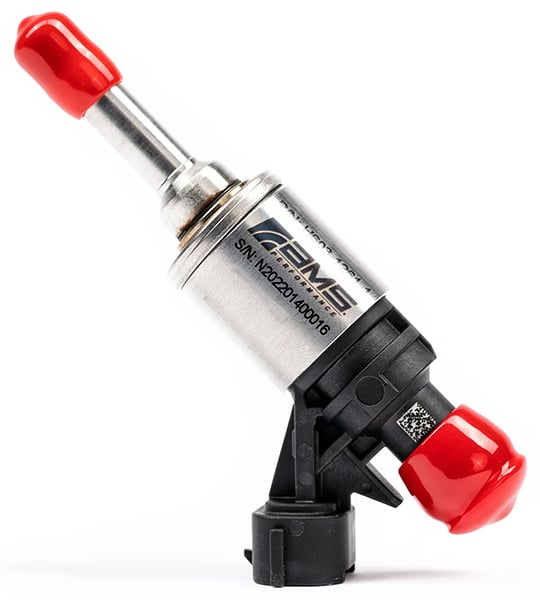
Another somewhat common issue with the Nissan VR30DDTT engine is fuel injector failure.
Some claim this happens due to modifications, tuning, and running E85 fuel, but there have also been reports of fuel injector failures on stock VR30DDTT engines.
Once again, the manufacturer is aware of the problem and issued a fix in the form of a new fuel rail, which hopefully takes care of the issue permanently.
Seeing as Nissan and Infiniti are aware of it, we can assume this is something they’re willing to fix without charging the owners.
If not, and you’re left having to pay for it yourself, make sure you get the newest version of the OEM fuel rails.
Just installing new injectors, whether OEM or aftermarket units, usually won’t fix the problem, which is seemingly caused by metal debris coming from the OEM fuel rail.

If there’s any debris left in the fuel rails, that can potentially break the new injectors as well, so the only guaranteed fix is to get the new fuel rails installed.
Those worried about fuel injector and fuel rail failure should look for signs and symptoms such as an illuminated check engine light, poor performance, and rough idling and stuttering.
If you suspect any fuel injector problems, keep an eye out for the following fault codes:
- P0301
- P0302
- P0303
- P0304
- P0305
- P0306
Excessive Carbon Build-Up
Finally, as with virtually all direct injection engines, there’s the potential issue of carbon build-up in the VR30DDTT.
It’s still a relatively new engine, so this isn’t a common problem yet, but it’s certainly something to keep in mind if you’re buying a car fitted with the VR30DDTT, especially high-mileage cars.
On engines with port injection, fuel flows through the intake ports and valves, which prevents any carbon build-up.
Direct injection engines, like the VR30DDTT, can offer improved performance, better fuel economy, and lower emissions.
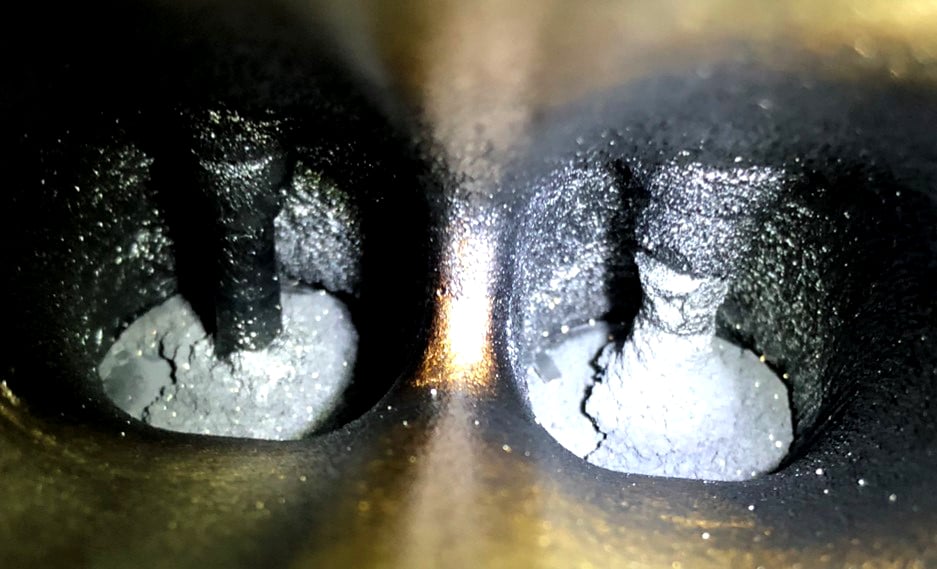
The trade-off when fuel is injected directly into the cylinder, rather than flowing over the valves, is that carbon deposits will slowly build up over time.
As the carbon build-up increases, airflow into the cylinders will be restricted, resulting in a loss of power. To mitigate this issue, consider installing an oil catch can or air oil separator.
However, this is something that happens very gradually, and it takes a few years before it becomes problematic, so it can be difficult to notice any loss in power.
Other symptoms of carbon build-up include engine misfires, poor idling, and a choppy throttle response.
In a worst-case scenario, large pieces of carbon deposit can sometimes break off and get stuck or cause damage elsewhere in the engine.
There’s no need to worry about carbon deposits on a newer or low-mileage VR30DDTT engine, but if your car has done between 60,000 and 100,000 miles, it’s worth having it checked, especially if you’re already experiencing some issues.
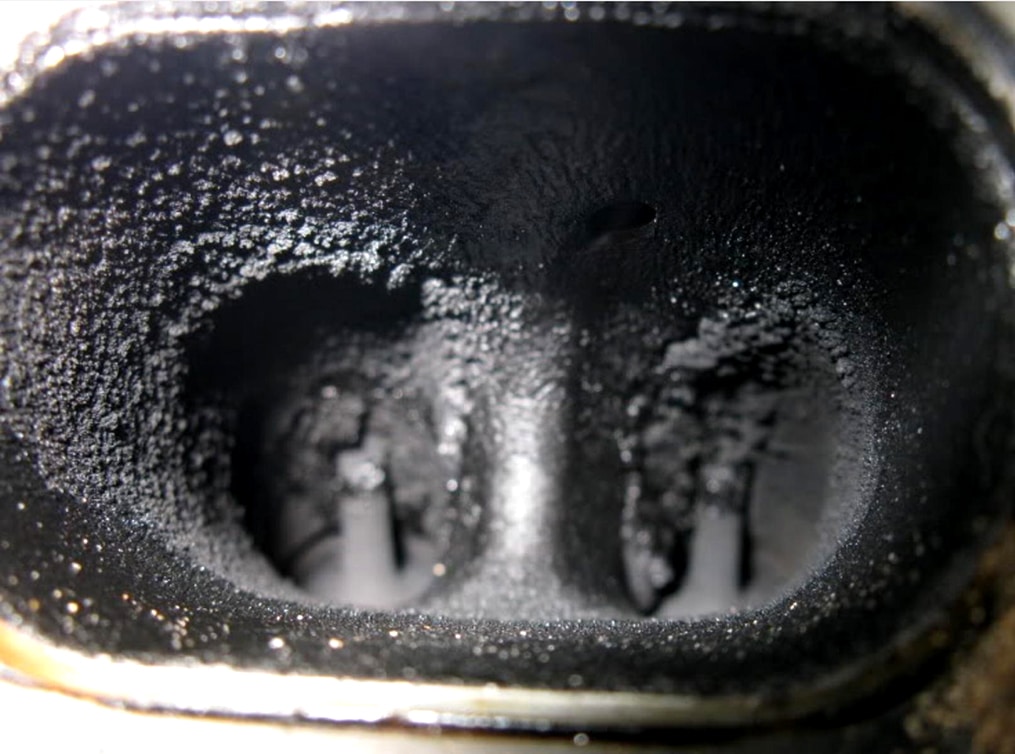
Removing the carbon deposits isn’t particularly difficult or expensive, so if you have the walnut blasting equipment and the required knowledge, it can be a DIY job.
If you bring it to a garage, the biggest expense will be the labor, in part because they have to remove the intake manifold in order to access the intake valves.
At the end of the day, these “common problems” aren’t as common as the internet will have you believe.
There will always be more people posting about negative experiences than positive ones, and for the most part, the Nissan VR30DDTT is considered a reliable engine.
Sure, there were some initial teething issues, but Nissan did their best to fix these problems as soon as they were aware of them.
With proper maintenance and care, using only quality oil and premium fuel, a car with the VR30DDTT can last you a lifetime.
VR30DDTT vs VQ37VHR

Nissan introduced the VQ37VHR engine back in 2008, and it was soon found under the hood of multiple models, both from Nissan and Infiniti, perhaps most notably in the Nissan 370Z and Infiniti G37.
The engine is still highly praised today, 15 years after it first saw the light of day, largely thanks to its 325 hp to 350 hp factory tune and near-bulletproof reliability.
From the factory, power figures of the VR30DDTT and VQ37VHR are comparable, but the 3.0L twin turbo V6 has the naturally aspirated 3.7L beat in terms of torque — 295 lb-ft to 350 lb-ft vs 276 lb-ft.
Regarding tuning, the VR30 has the most potential if you only want to use simple bolt-on mods, such as an exhaust and intake, along with a remap.
That’s just the simple truth of pitting a turbocharged engine against one that’s naturally aspirated.

However, if you want to take the VQ37 down the forced induction route, all bets are off, as these engines have been modified to produce ridiculous amounts of power.
There are supercharged VQs out there that produce in excess of 700 hp. For instance, Fast Intentions has developed a 370z turbo kit that can push it beyond the 1000 whp mark.
For now, it seems the VQ37 has more tuning potential, as we haven’t yet seen a VR30 that produces numbers like that.
It’s still too early to say, though, as the VR30DDTT is a much newer engine and its true potential probably hasn’t been reached yet. In a couple of years, chances are the tables will have turned.
One thing owners of both VQ and VR-powered cars do seem to agree on is that the VQ has a more distinct sound compared to the more muffled note of the VR30, but a decent aftermarket catback or axle back exhaust should compensate for that.
At first glance, it may look like the VQ is the most reliable of the two as well, but once again, you have to keep in mind that the VR30 is newer and there are bound to be some issues in the early days of any new engine.
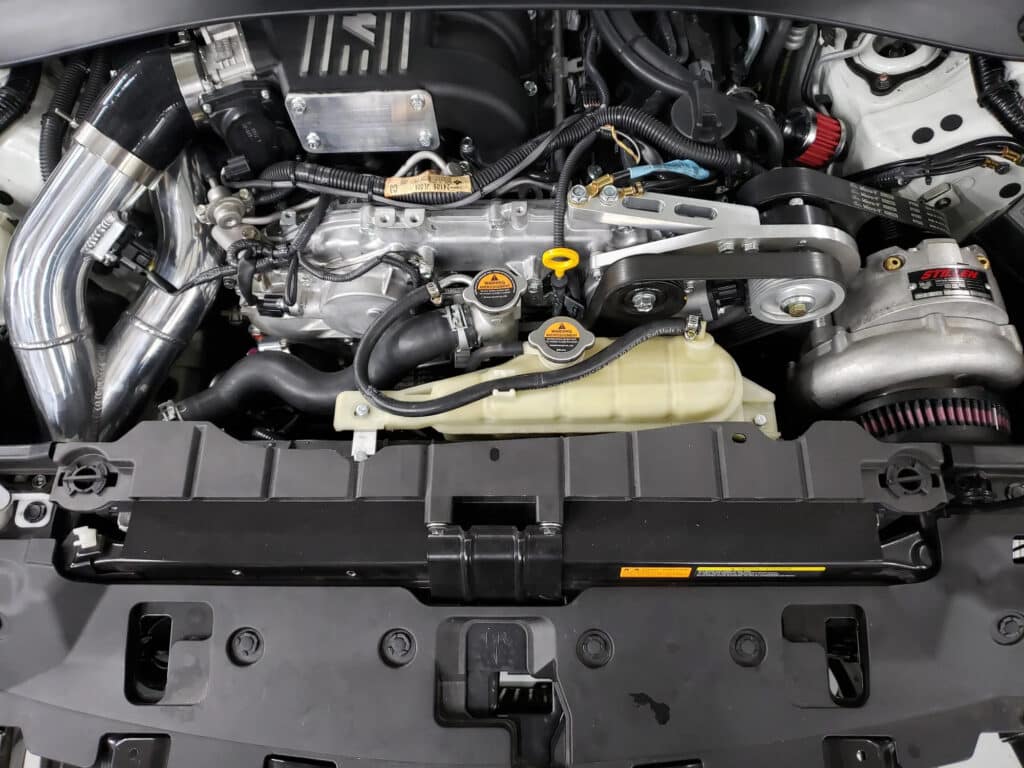
In addition, Nissan has acknowledged the problems that have emerged and issued service bulletins to get them fixed, so the updated VR30DDTT units should offer the reliability we’ve come to expect from Japanese manufacturers.
As for the long term, we’ll just have to wait and see how the VR30 will fare in that regard.
Newer engines have more fancy technology, meaning there are more points of failure. Besides, naturally aspirated engines tend to be more reliable than turbocharged ones.
So, which is the best high-performance Nissan engine of the two? Honestly, there is no right or wrong answer.
It all comes down to whether you want a turbocharged engine that’s easy to extract more power from or a naturally aspirated one with a proven track record.
Nissan VR30DDTT Tuning
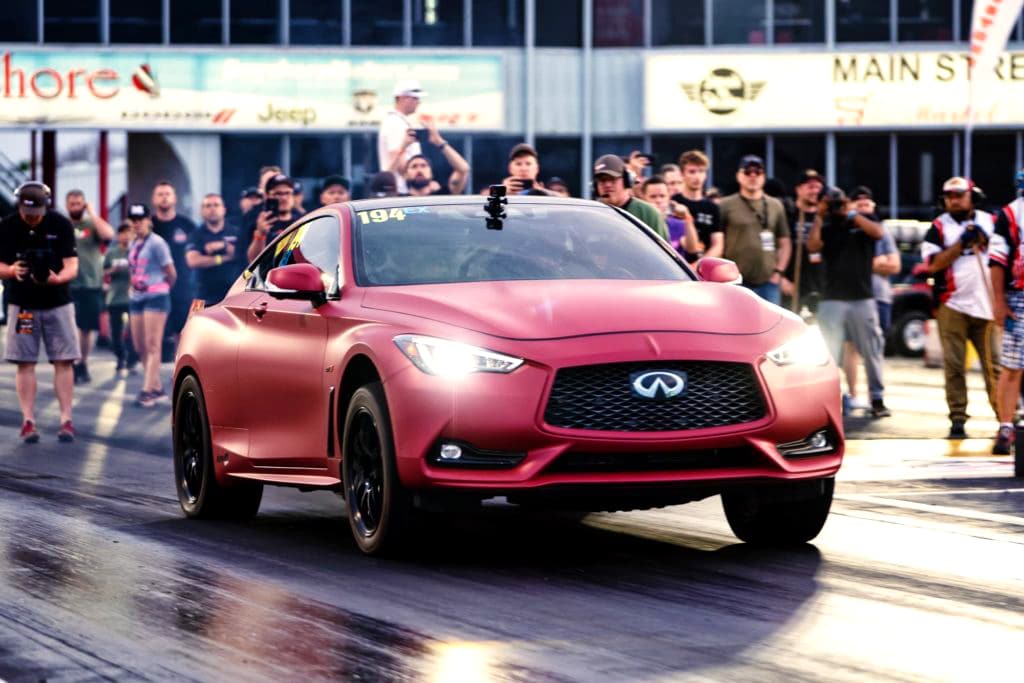
The VR30DDTT engine delivers plenty of power straight from the factory, and reputable tuning shops say the power figures are understated from the factory.
Officially, it’s available with 300 hp and 295 lb-ft of torque, or a whopping 400 hp and 350 lb-ft of torque in the Infiniti Red Sport 400 models and the new Nissan Z.
In reality, these engines actually produce more power than what the manufacturer has claimed. The 400 hp version usually puts down around 380 whp on the dyno and the 300 hp version makes 300+ whp.
This is a substantial amount when you factor in the 15-25% power loss through the drivetrain.
There’s still room for improvement, though, and VR30DDTT tuning can be a fairly simple and straightforward process, as it’s a twin-turbo V6 unit with lots of untapped potential.

A few bolt-on aftermarket goodies, such as a short ram or cold air intake, a downpipe, an aftermarket exhaust system, and a heat exchanger can go a long way.
These modifications are designed to make the engine breathe better and decrease backpressure when increasing boost.
Swapping the original heat exchanger for a larger unit will also make power more consistent during back-to-back runs or on track days.
With the stage 1 mods mentioned above, you can expect to see an increase of close to 100 hp and 100+ lb-ft on premium pump fuel. Those wanting to take things even further should consider a VR30DDTT turbo upgrade.

The first option is a pair of hybrid turbochargers. These will retain the original housing, which means you can still use the OEM exhaust and intake configuration, but use a larger compressor wheel.
The end result is improved airflow, which translates into more power; 80+ additional whp isn’t unheard of, and even more is possible with supporting mods.
Wondering how much power can a stock VR30DDTT handle? Going for a stage 2 turbo upgrade will reportedly land you somewhere in the region of 575 whp, which should suffice for even the most power-hungry amongst us.

Z1 Motorsports built a 600+ whp ZR34 Nissan Z that’s running on stock internals, and AMS Performance has a 700+ whp Z that runs 9s on the quarter-mile, proving that the VR30DDTT is a very tunable and durable engine.
This is still a fairly new engine, so it’s hard to say whether VR30DDTT tuning will negatively affect reliability and longevity, but there is usually a tradeoff point where adding more power will decrease the engine’s life expectancy.
One thing is for sure, we still don’t know what the VR30DDTT max hp will be, as parts are still being researched and developed, but we’ll probably see some ridiculously powerful Nissan Zs in the near future.
Why We Love the VR30DDTT

The Nissan VR30DDTT offers a good balance of performance and reliability, but it has also suffered from a couple of problems since it was first released.
These issues should’ve been taken care of under warranty by now, and hopefully, they can be chalked up to design flaws that just needed some tweaks and fine-tuning.
Those who want more power are also spoiled for choice, as there’s a vast, and still growing, aftermarket catering to the VR30DDTT.
We’ve already seen some impressive Nissan Z builds, and wouldn’t be surprised to see some next-level stuff on our favorite YouTube channels in the very near future.

